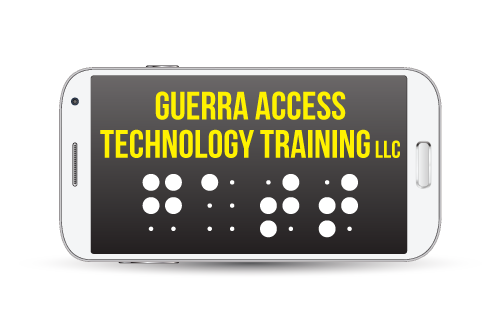The Importance of Screen Reader Software for Web Navigation
By Lily Mordaunt
About Lily Mordaunt.
Lily is a graduate of Hunter College with a Bachelor’s degree in creative writing.
“How do you understand that? It’s speaking so fast,” is a sentiment I hear often whenever someone experiences a screenreader for the first time. In response, I would usually smile and say that, though it is fast, I’ve been using screen readers—software designed to convert text to speech—nearly my entire life. And after almost 26 years, 90% speed isn’t quite so jarring.
Born with congenital glaucoma, I could only ever see out of one eye. And, as I grew up, I did experience some vision loss. Though expected, as the high pressure and optic nerve damage associated with glaucoma is often paired with gradual vision loss, it was still frustrating.
Yet the experience was not as frustrating as it could have been, had print been my primary source of information. In school, my TVI—teacher of the visually impaired—taught me print as well as braille and how to use a computer with screen reading software. This post will talk about my experience with screen readers and how I and other visually impaired people use the web.
How I navigate with a screen reader
Blind people can listen to, navigate, and interact with web content through screen reader software. For a website to be accessible to me and other blind or visually impaired users, there must be text. If the text is designed as part of an image, then I, as a low-vision user, can’t access it. My screen reader will just read “link” or “image” or “radio button”.
I’ve lost count of how many times I’ve had to click unlabeled links, discover that it wasn’t what I was looking for, and then remember how far along I was (by counting the incorrect links) until I found what I needed. Over time, I’ve had to develop work-arounds. I might bookmark the page once I locate it. Or I hope I remember how many links I had to bypass to get to the one I needed.
Sometimes switching to the app version can help. But often I hear the word “button” or silence.
While this happens less and less now, I’ve also had to ask a sighted peer or family to show me where the button or tab was that I needed, turn my screen reader off, and hope I managed to touch the right part of the screen. You can imagine, that was never a fun experience. And, as pointed out by the thousands of ADA lawsuits filed each year, it is not an experience equal access to the content on the website or app.
Making Websites and Apps Accessible for Screen Readers.
From what I’ve already learned as an intern at UsableNet, digital accessibility does not mean having to sacrifice style on your websites and apps. Implementing best practices can even lead to innovative design.
With 1 in 4 people having a disability, digital accessibility makes good business sense. The global market of people with disabilities is over 1 billion people with a spending power of more than $6 trillion.
People of all abilities spent more time and money online in 2021 than pre-pandemic levels. According to a report by Digital Commerce 360,
when digital revenue in 2021 is compared with 2019, online spending soared by 50.5%
Having actual text—implementing alt text to describe images, for example—makes it easier for screen reader users like me and search engines like Google to take note of your content. As a blind user, when my screen reader announces “image” as I’m scrolling, I gloss over that content. Google does the same without some kind of text description. The descriptive text helps screen reader users like me and allows Google to detect and display your images in search results.
Digital Accessibility for your customers of all abilities
Over the past few years, perhaps driven by the thousands of ADA lawsuits filed in private courts, I have noticed a greater push toward accessible content. Sometimes the push for digital accessibility comes from consumers, like me, who don’t want to have to guess at what button they’re selecting.
I always get excited when it gives me information at the top of the webpage on how to navigate the site with a screen reader.
The best way to help and serve people and users of screen readers like me is to seamlessly integrate digital accessibility into all of your websites and apps.
If you aren’t sure if your website is accessible, a good place to start is to schedule a consultation or run a free AQA test. AQA is UsableNet’s automated accessibility testing platform and the free test gives you access to all conformance issues, recommended fixes, and code errors.
End of Article.
